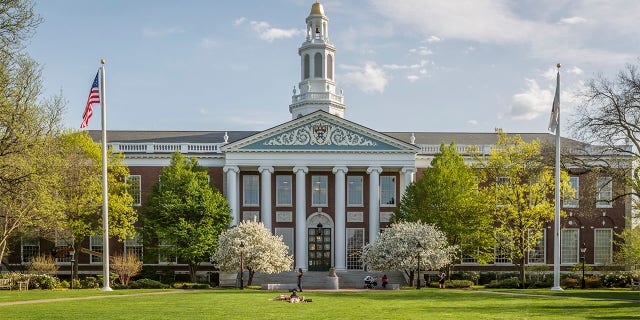It's time to admit affirmative action has failed

Affirmative action, college, and unintended consequences
‘Is College Worth It?’: Tucker takes a closer look at the impact of affirmative action in higher education. #Tucker
The Supreme Court is set to take up two cases challenging the use of race based admissions, or affirmative action, in our nation’s top colleges. At issue are policies that make it far more difficult for applicants from some racial groups, specifically Asian Americans, to gain entry to competitive schools, while other groups, such as blacks and Hispanics, face a lower academic bar.
Given that affirmative action has been used by colleges since the 1960s the first question we should ask as a society is, how well has it worked?

CAMBRIDGE, USA – APRIL 2, 2018: view of the historic architecture of the famous Harvard University in Cambridge, Massachusetts, USA.
(iStock)
To answer that question we have to have some understanding of what the goal of affirmative action was when the term was coined by the Kennedy administration in 1961. Here is what Executive Order 10925 had to say, government contractors should “take affirmative action to ensure that applicants are employed, and employees are treated during employment, without regard to their race, creed, color, or national origin.”
But in 1965 Lyndon Johnson, with his own executive order, tweaked the intent of affirmative action to promote full realization of equal opportunity. That’s where things got confusing. It was no longer enough for governmental systems, including in education, to be color-blind, they had to actually produce diversity. Suddenly race had to be taken into account in order for race not to account for discrimination in jobs and admissions.

There was a logic to this half a century ago. In 1965 the belief that certain racial groups were inferior was much more widespread, and more importantly, some Americans such as some black and Hispanic citizens, really were starting with structural disadvantages. These included poverty, lack of parents with college education, and lack of access to a quality of education needed for higher learning advancement. It made some sense to kick-start participation in universities for these groups.
The idea here was that positive discrimination in the short term would level the playing field over time and render affirmative action no longer necessary. Surely, the quotas and set aside programs were not meant to go on forever, but rather to contain the seeds of their own obsolescence.

By this measure there is simply no way to look at affirmative action as a success. It has been 50 years. Yet, proponents of race based admissions seem to still cling to the hope that if we do it just a little longer it will work. Or do they? A key question for proponents of affirmative action, one we don’t hear a lot of answers to, is whether they think the need for it will eventually end, or whether they think it should go on forever.
By the old rubric, the one in which affirmative action’s success is measured by not needing it anymore, it has been an abject failure, nobody argues that disadvantaged minority groups have overcome the education gap in America. But for supporters of race-based admissions the goal seems to have changed, it is now more akin to reparations. That is to say that affirmative action has morphed into a permanent racialized benefit not tied to the goal of equal opportunity, but rather its own reward.
To have an honest conversation about affirmative action we have to admit that it has not worked in achieving its original goal. Regardless of where the courts land, Americans have to decide if this new goal of affirmative action, the permanent establishment of race-based opportunity is in keeping with American values.
If we are going to ask Asian kids to meet some higher academic standard in order fix racism in America then they at least deserve to know how and when that will be achieved. So far, affirmative action has not worked, so when can we expect that it will?
Source: Read Full Article

